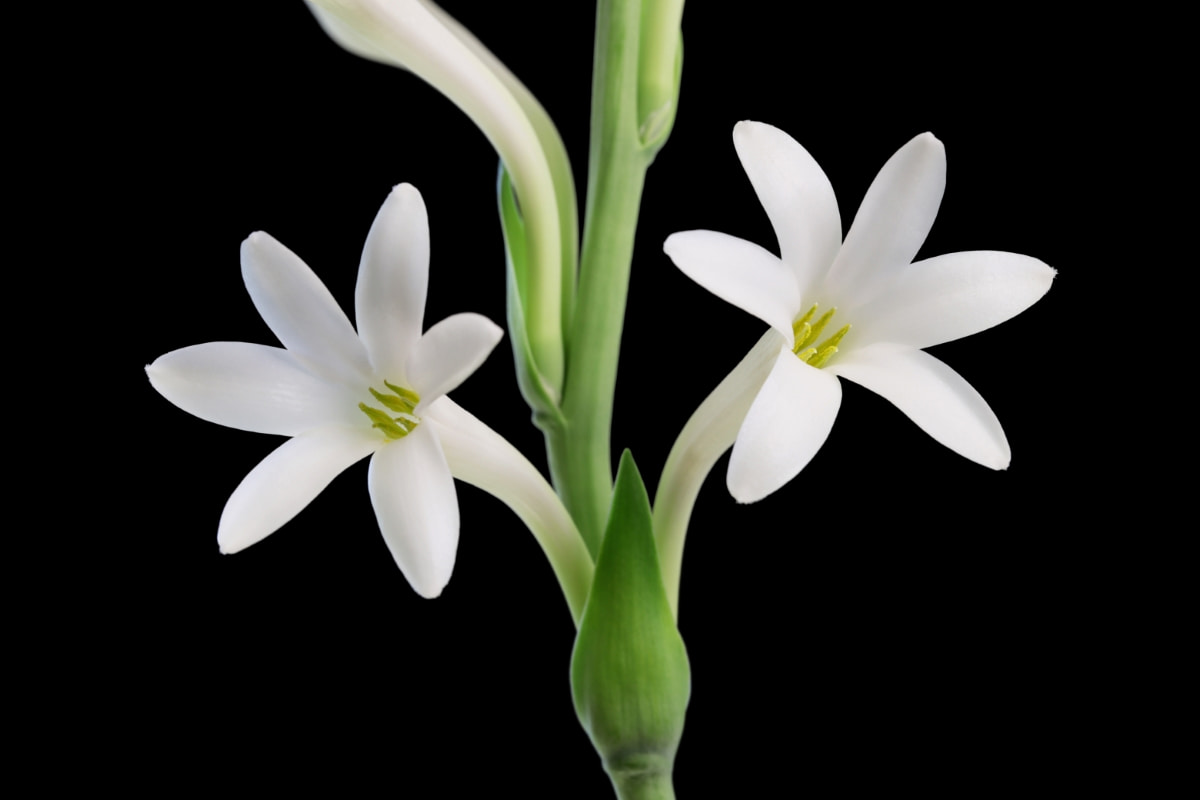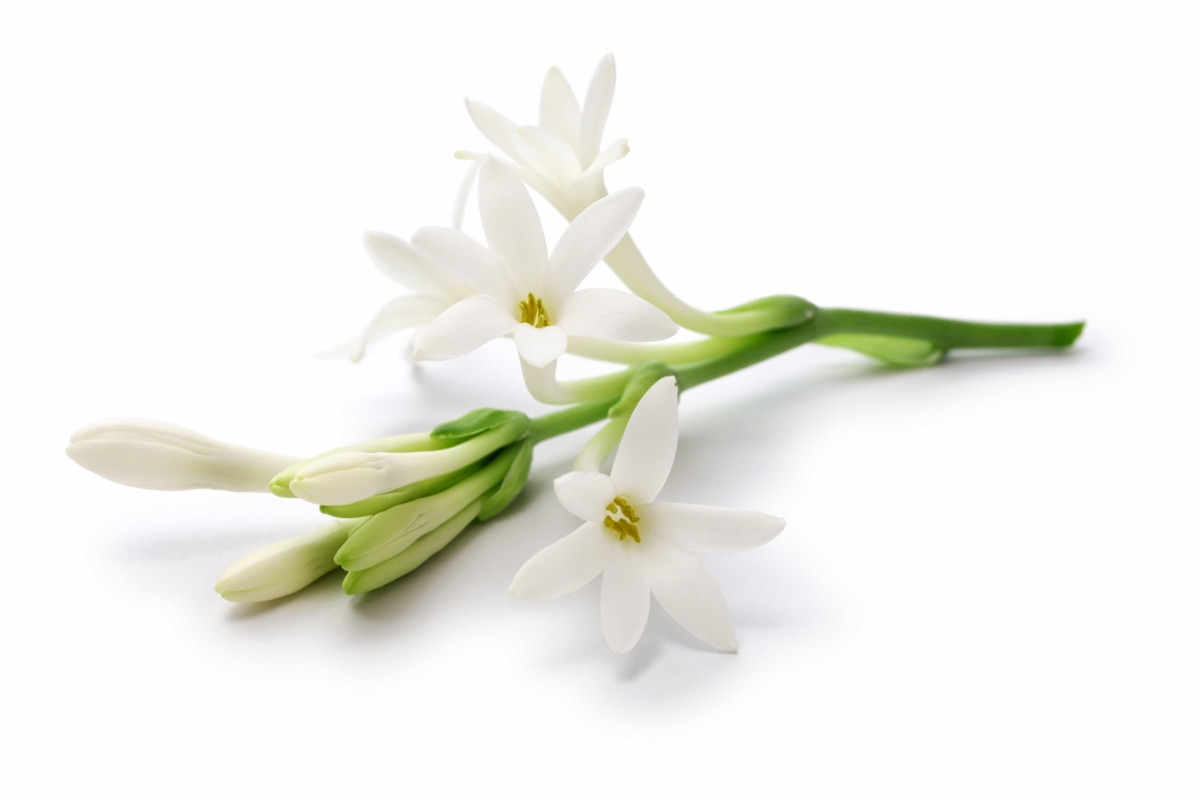Neem oil acts as a powerful insecticide, repelling and killing a wide range of pests that can damage your Tuberose plants. It targets common pests such as aphids, mealybugs, and scale insects while leaving beneficial insects unharmed. Additionally, neem oil can prevent and treat fungal diseases that may affect your Tuberose plants. By applying neem oil regularly, you can reduce the risk of powdery mildew or black spot from taking hold. Neem oil contains various nutrients that nourish the plant’s roots and leaves while promoting healthy growth.

How to Use Neem Oil on Tuberose Plants
How to Prepare Neem Oil for Use on Tuberose Plants
Neem oil is a wonderful natural solution for controlling pests on your Tuberose plants. First, gather the necessary ingredients and tools. You’ll need pure neem oil, a mild liquid soap (preferably organic), and water. Mix them in the right proportions to create an effective spray solution.
To prepare the neem oil mixture, start by diluting the neem oil with water according to the manufacturer’s instructions. Typically, this involves mixing one or two tablespoons of neem oil with one gallon of water. Add 2 to 3 drops of liquid soap as well; this will help the solution adhere better to your plants. Next, pour the diluted neem oil into a spray bottle for easy application.
How to Apply Neem Oil on Tuberose Plants
Neem oil is an effective solution for controlling pests on Tuberose plants. Before applying neem oil, make sure to thoroughly inspect your Tuberose plants for any signs of pests or diseases. Look out for aphids, mealybugs, and whiteflies, which are common pests that can infest Tuberose plants. Once you have prepared the neem oil mixture and identified any pest infestations, it’s time to apply the solution.
Spray the diluted neem oil directly onto all parts of the Tuberose plant – leaves stems, and flowers. Be sure to cover both sides of the leaves as well. It’s important to repeat this process every 7-14 days or as needed until the pest problem is under control. Neem oil works by suffocating and repelling insects while also disrupting their feeding habits and reproductive cycles.
Mixing and Dilution for the Right Concentration of Neem Oil for Tuberose Plants
Mixing and diluting neem oil for the right concentration is crucial to ensure its effectiveness in controlling pests on Tuberose plants. First, gather your ingredients: neem oil, a mild liquid soap (such as dish soap), and water. Mix neem oil with liquid soap in a small container. The soap helps emulsify the oil and aids in even distribution. Next, add this mixture to one gallon of water in a spray bottle. Shake well to ensure proper mixing. This diluted solution can be used immediately or stored for future use.
When applying neem oil to Tuberose plants, it’s important to cover both sides of the leaves thoroughly. Be sure to target areas where pests are commonly found, such as leaf undersides and stems. Remember that different pest infestations may require varying concentrations of neem oil. For minor issues, a lower concentration may suffice; however, more severe infestations may require higher concentrations. Adjust accordingly based on your specific situation.
Can Neem Oil Be Used on All Tuberose Plant Varieties?
Tuberose plants come in various varieties, each with their unique characteristics and growing requirements. Whether you have single-petaled or double-petaled Tuberose flowers, neem oil is a natural and effective solution for getting rid of pests. One of the great things about neem oil is that it works against a wide range of common garden pests that can infest Tuberose plants. From aphids and whiteflies to mealybugs and spider mites, neem oil acts as a deterrent by disrupting their feeding habits and reproductive cycles.
In case you missed it: How to Use Neem Oil on Pansy Plants: Best Natural Way to Get Rid of Pests on Pansy Plants

How Long Does Neem Oil Stay Effective on Tuberose Plants?
Neem oil is a popular solution for controlling pests on Tuberose plants. The weather conditions play a crucial role. If it rains heavily or if there are frequent washouts due to irrigation, the neem oil may get washed away from the plant surfaces. In such cases, reapplication may be necessary to maintain its effectiveness. The intensity of pest infestation also impacts how long neem oil remains effective.
If your Tuberose plants have severe pest problems, you might need to apply neem oil more frequently to combat and control them effectively. Additionally, the concentration of neem oil used can affect its longevity. It is essential to follow proper mixing and dilution instructions specified by the manufacturer for optimal results. Using too high or too low concentrations can impact both efficacy and durability.
Using Neem Oil in Combination with Other Pest Control Methods for Tuberose Plants
When it comes to keeping your Tuberose plants healthy and pest-free, using neem oil alone may not always be enough. One effective approach is companion planting. Certain plants, like Marigolds and Garlic, naturally repel pests that commonly attack Tuberose plants. By interplanting these repellent species around your Tuberose plants, you can create a natural barrier against pests.
Additionally, practicing good garden hygiene is essential. Removing any dead leaves or plant debris regularly will help reduce the risk of attracting pests to your Tuberose plants. Another method to consider is introducing beneficial insects into your garden. These predatory insects feed on common pests like aphids and caterpillars, providing natural pest control without the need for chemical intervention.
Some Common Pests and Diseases that Neem Oil Can Control on Tuberose Plants
Tuberose plants are susceptible to various pests and diseases that can hinder their growth and flowering. However, neem oil is a natural solution that can effectively control these issues. One common pest that affects Tuberose plants is aphids. These tiny insects cause stunted growth and yellowing leaves. Neem oil acts as a repellent against aphids, preventing them from infesting your Tuberose plants. Another troublesome pest for Tuberose plants is spider mites.
In case you missed it: How to Use Neem Oil on Lily Plants: Best Natural Way to Get Rid of Pests on Lily Plants

These microscopic pests spin webs on the undersides of leaves and suck out plant juices, leading to discoloration and wilting. Neem oil works by suffocating spider mites, effectively eliminating their presence on your Tuberose plants. Fungal diseases can also be a concern for Tuberose growers. This disease manifests as white or grayish patches on leaves and stems, inhibiting photosynthesis and weakening the plant’s overall health. Applying neem oil can help suppress fungal activity and prevent its spread to other parts of the plant.
How to Monitor the Effectiveness of Neem Oil on Tuberose Plants
- Regular inspection: Take the time to closely examine your Tuberose plants for any signs of pest activity or damage. Look for chewed leaves, wilting, discoloration, or the presence of insects.
- Keep a record: Maintain a journal where you can document any changes you observe in your Tuberose plants after applying neem oil. Note down dates, symptoms, and observations.
- Check for new growth: Healthy plants should show signs of fresh growth after using neem oil as pests are controlled. Look out for new leaves, buds, or flowers appearing on your Tuberose plants.
- Monitor pest population: Keep an eye on the number of pests present on your Tuberose plants before and after applying neem oil. If the population decreases significantly over time, it indicates that neem oil is effective.
Safety Precautions to Take when Using Neem Oil on Tuberose Plants
- Protective Clothing: Before applying neem oil, make sure to wear protective clothing. This will prevent direct contact with the oil and minimize any potential skin irritation.
- Proper Ventilation: Always apply neem oil in a well-ventilated area to avoid inhaling excessive fumes or vapors. If possible, work outdoors or open windows and doors for adequate air circulation.
- Timing of Application: Avoid applying neem oil during peak sunlight hours as this can increase the risk of plant burn due to magnified UV rays interacting with the oil residue.
In case you missed it: How to Use Neem Oil on Bougainvillea: Best Natural Way to Get Rid of Pests on Bougainvillea

Conclusion
Neem oil is truly a natural wonder when it comes to protecting Tuberose plants from pests and diseases. Its numerous benefits, such as being safe for the environment, effective against a wide range of pests, and easy to prepare and apply, make it an excellent choice for gardeners looking for a natural solution. With its powerful properties, neem oil provides a safe and effective solution for keeping your beloved tubers thriving.
- Feed Your Flock for Less: Top 10 Tips to Save on Chicken Feed
- Ultimate Guide to Ossabaw Island Hog: Breeding, Raising, Diet, and Care
- Hatching Answers: The Top 10 Reasons Your Chickens Aren’t Laying Eggs
- Eggs and Economics: Breaking Down the Cost of Raising Backyard Chickens
- Defend Your Greens: Proven Methods to Keep Iguanas Out of Your Garden
- Ultimate Guide to Cinnamon Queen Chicken: A Comprehensive Guide for Beginners
- Ultimate Guide to California Tan Chicken: Breeding, Raising, Diet, Egg-Production and Care
- Ultimate Guide to Marsh Daisy Chicken: Breeding, Raising, Diet, and Care
- 10 Types of Chicken Farming Businesses You Can Start for Profits